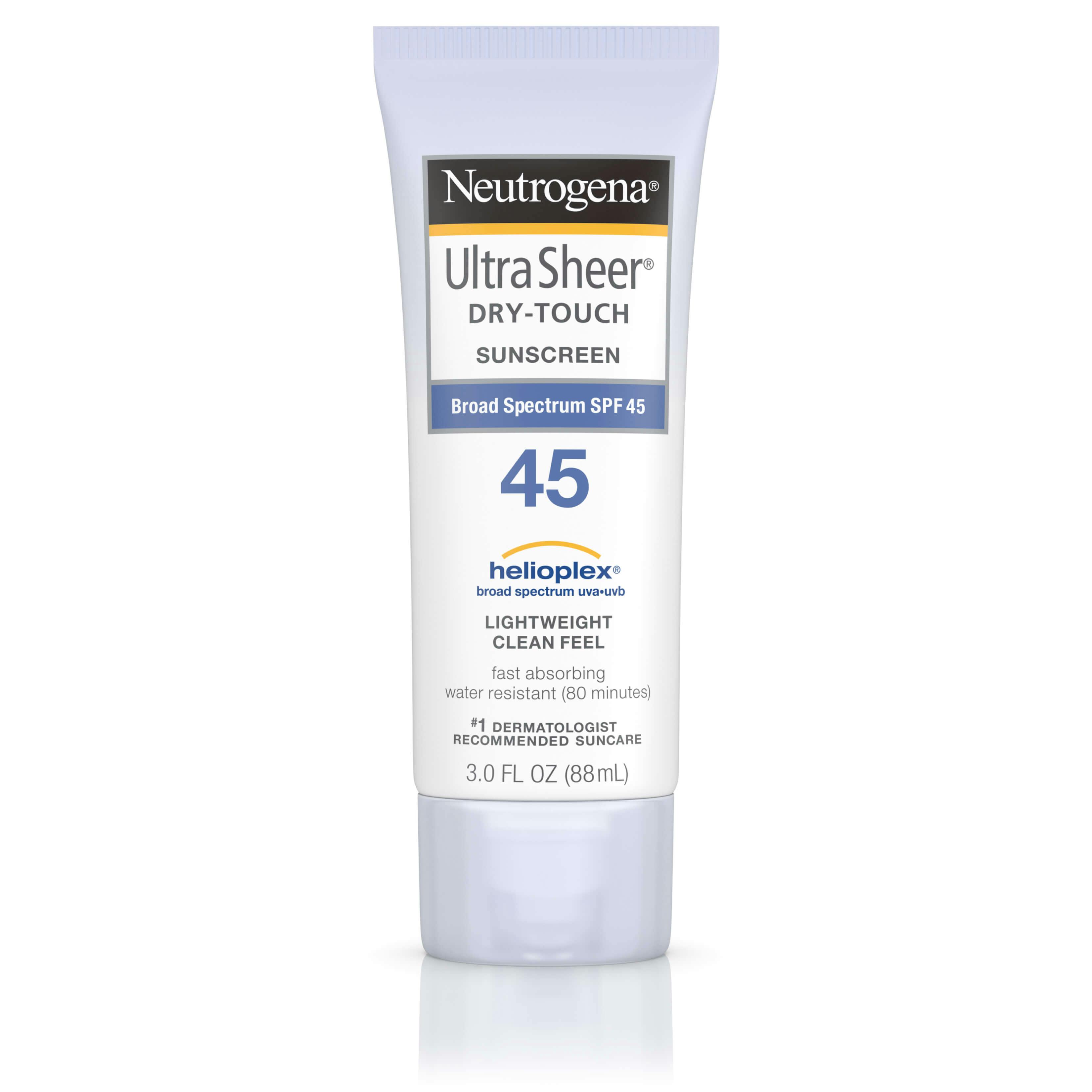
A sunscreen with BP-3 is definitely better than no sunscreen. However, if you find a formula that you love and contains BP-3, we do not think that you should throw it away. Overall, BP-3 is probably our least favorite sunscreen agent and we prefer sunscreens without it. It can be used in concentrations of up to 10% in the EU and up to 6% in the US.

This lightweight Broad Spectrum SPF 55 sunscreen. On the up side, sunscreens are pretty well regulated in several parts of the world, and BP-3 is considered " safe as used" and is an allowed sunscreen agent everywhere. Get powerful sun protection without the heavy finish with Neutrogena Ultra Sheer Dry-Touch Sunscreen.
Ultra sheer dry touch sunscreen free#
If that was not enough, Wikipedia claims that BP-3 is nowadays the most common allergen found in sunscreens, and the always-trustworthy smartskincare writes that " have been shown in some studies to promote the generation of potentially harmful free radicals". In fact, a 2004 follow-up study to examine the estrogenic effect of sunscreens when used topically on the whole body found that "the endogenous levels of reproductive hormones were unaffected" (even though BP-3 could be detected both in plasma and urine, so its absorption is no doubt too good). Estrogenic activity was confirmed only in-vitro (in test tubes) and when taken orally by lab animals, and not when used topically as you would normally. A sunscreen with BP-3 is definitely better than no sunscreen.Acrylates/C12-22 Alkyl Methacrylate CopolymerĪnother concern of BP-3 is that it shows some estrogenic activity, though it's probably not relevant when applied topically to the skin.

Ultra sheer dry touch sunscreen skin#
Neutrogena Wet Skin Kids Sunblock Stick SPF 70 0.47 oz. On the up side, sunscreens are pretty well regulated in several parts of the world, and BP-3 is considered " safe as used" and is an allowed sunscreen agent everywhere. Neutrogena Ultra Sheer Dry-Touch Sunscreen SPF 60, Water & Sweat Resistant, 88mL Lotion, Pack of 4. Rating: I don’t do this very often, but I’m giving this product a 5/5. I will definitely rebuy it as I have been doing for a couple of years now. It also helps keep my skin moisturized to a certain extent. If that was not enough, Wikipedia claims that BP-3 is nowadays the most common allergen found in sunscreens, and the always-trustworthy smartskincare writes that " have been shown in some studies to promote the generation of potentially harmful free radicals". But Neutrogena UltraSheer Dry Touch Sunblock SPF 50+ (PA+++) does not cause this issue.


Another concern of BP-3 is that it shows some estrogenic activity, though it's probably not relevant when applied topically to the skin.


 0 kommentar(er)
0 kommentar(er)
